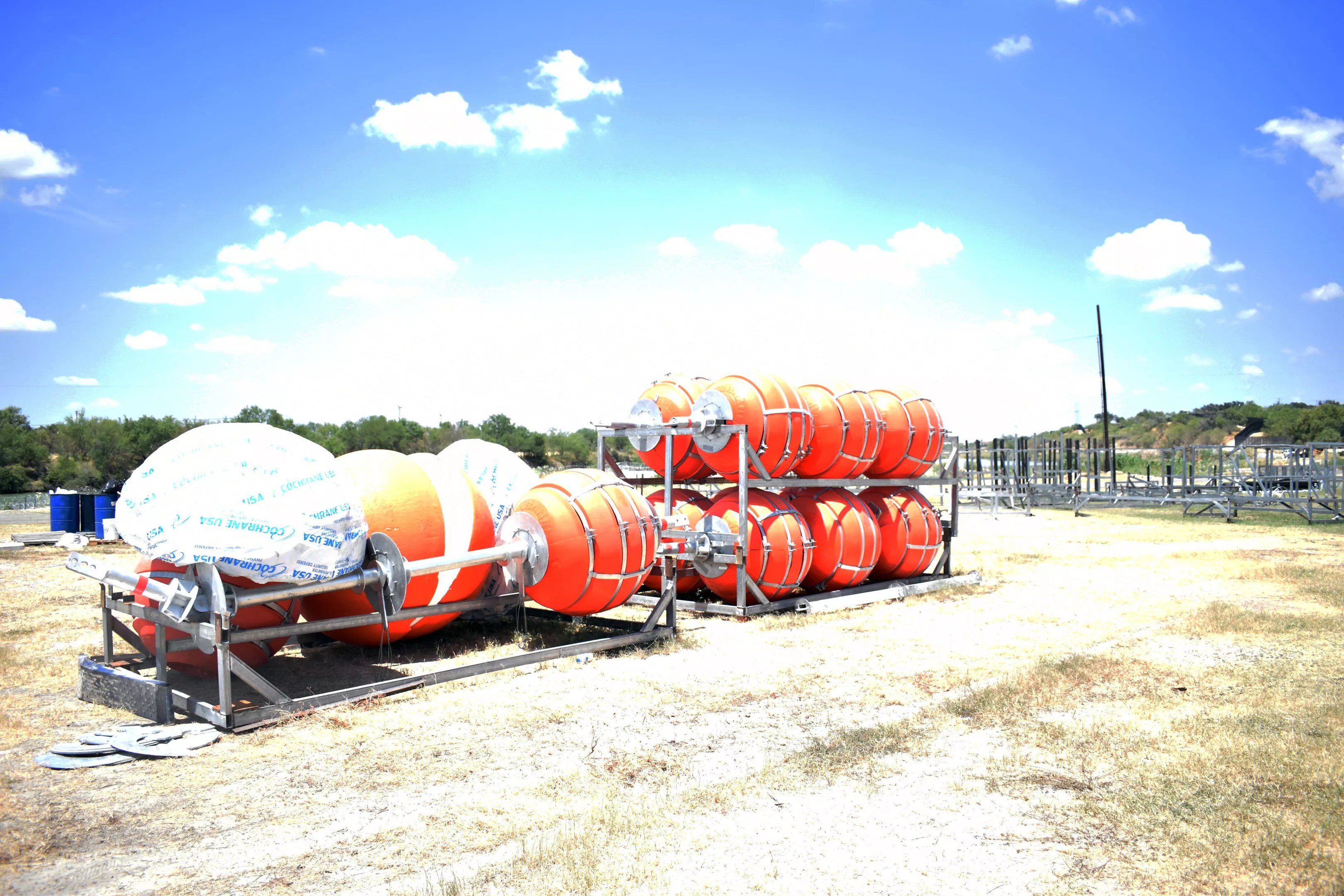
Sara Button

Audio By Carbonatix
By the time it’s complete, each year has a set of affecting images that will forever be associated with it. A blue sky streaked with divergent trails of white smoke above a fiery ball reminds many who were alive of 1986 and the Challenger space shuttle disaster. Revelers standing on top of a graffiti-covered, crumbling Berlin Wall will forever symbolize 1989 for people across the globe.
If you can think of 2001 without quickly recalling images of people covered in soot and ash wandering around Manhattan in shock immediately following the 9/11 terrorist attacks on the World Trade Center, then consider yourself lucky.
We may still have a few months left in the year, but when 2023 eventually gives way to 2024, it’s a safe bet that for many, especially Texans, the pictures that will represent the year that was will be of children entangled in razor wire and of large orange buoys floating in the Rio Grande.
In June Texas Gov. Greg Abbott announced he would have a protective buoy system deployed to stem illegal border crossings. In July the Biden administration sued the governor over the use of the floating barrier, claiming it “poses a risk to navigation, as well as public safety, in the Rio Grande River, and it presents humanitarian concerns,” according to a letter from the U.S. Department of Justice.
This year, make your gift count –
Invest in local news that matters.
Our work is funded by readers like you who make voluntary gifts because they value our work and want to see it continue. Make a contribution today to help us reach our $30,000 goal!
On Tuesday, a federal judge in Austin took issue with the state’s assertion that it was defending itself against a so-called “invasion” of migrants and cartel members by using the more than 1,000 feet of buoys, which are equipped with nets and jagged metal blades. Judge David A. Ezra has not issued a ruling yet, but according to the Texas Tribune, he said, “This is a United States District Court. It is not Congress. It is not the president. I’m not here to engage in nor do I have any inclination to engage in any type of political comment in this decision.”
It was also back in July that some of the horrifying realities of Abbott’s border policies were offered up through leaked emails from a state trooper. Official photos weren’t leaked along with the correspondence, but the images evoked by the trooper’s account of the inhumane treatment migrants had faced were as vivid as any camera could capture.
Descriptions of migrants attempting to cross the Rio Grande being pushed back into the water by law enforcement, a teen mother suffering a miscarriage while caught in razor wire and migrant families being denied water in extreme heat made headlines across the country and made the events along the border perhaps feel more real to those not living near it than ever before. Of course, vivid photographs of other instances similar to the ones that upset the trooper have since appeared in outlets all over.
“They were clearly dehydrated and in distress.” – Sara Button, photographer
Abbott was quick to not only push all the blame for the problems at the border onto President Joe Biden, but he repeatedly skipped the chance to show even a hint of remorse for the suffering many migrants had endured.
“Texas is deploying every tool and strategy to deter and repel illegal crossings between ports of entry as President Biden’s dangerous open border policies entice migrants from over 150 countries to risk their lives entering the country illegally,” Abbott said in a statement provided to the Observer following the leaked emails.
Former Observer contributor Sara Button now lives in Marfa and runs the Marfa Film Shop. She recently made the four-hour-plus drive from Marfa to Eagle Pass to see for herself how things were operating along the heavily scrutinized stretch of border.
Her photos, from Aug. 14, were taken in the middle of a day when temperatures soared above 100 degrees. She and a companion kayaked in the river and explored a bit on land as well. Although Button spotted border patrol officers and state troopers keeping watch at various points, such as boat ramps and around the international bridges, she didn’t observe any altercations or apprehensions. That’s not because the Rio Grande wasn’t being crossed that day, however.
Button notes that at one point, she was wading in the waist-high water. So too were groups of migrants, with some people, Button says, being forced to lift babies high upon their chests in order to navigate the waters that often flow faster during the day. Menacing concertina wire twisted upwards, standing tall on the Texas banks, awaiting those who managed their way across the river.
Although the authorities were not carrying out some of the dangerous treatment that has been written about, and the river wasn’t unusually high or dangerous that day, Button says the migrants they came across still suffered during their journey.
“They were clearly dehydrated and in distress,” she says. “One group was from Honduras, and the kids were crying and saying they really wanted water. My friend refilled empty water bottles for a group of migrants.”
Much of what she observed and captured with her camera that day was “heartbreaking to see,” she added. Below are some of the photos Button took that help give life to what is one of the major stories that will mark 2023 for years to come.
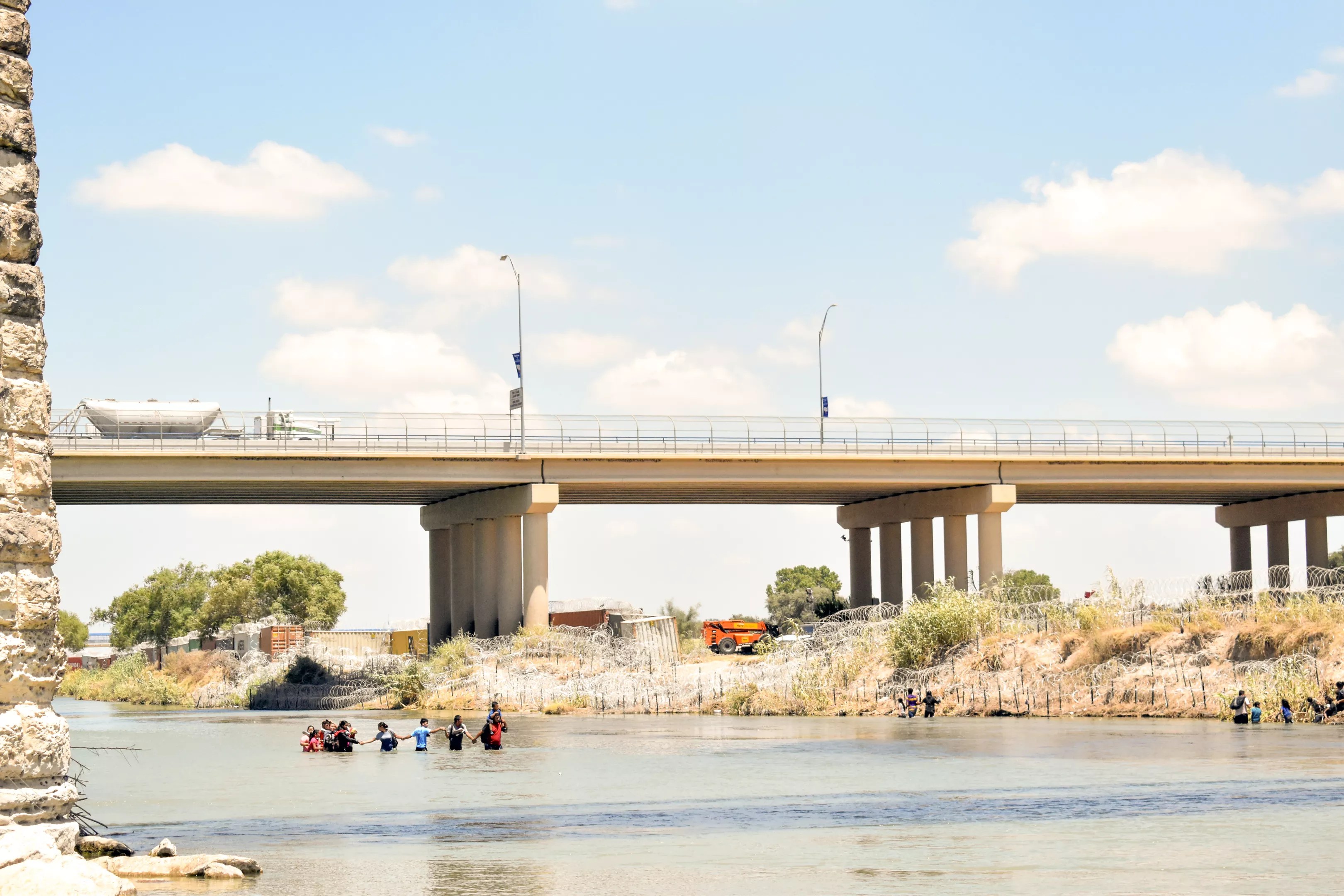
“I watched this group of migrants cross through the Rio Grande while holding hands from Piedras Negras, Mexico, to riverbanks in Eagle Pass. They formed a human chain by locking their hands together to combat the current of the river.” – Sara Button
Sara Button
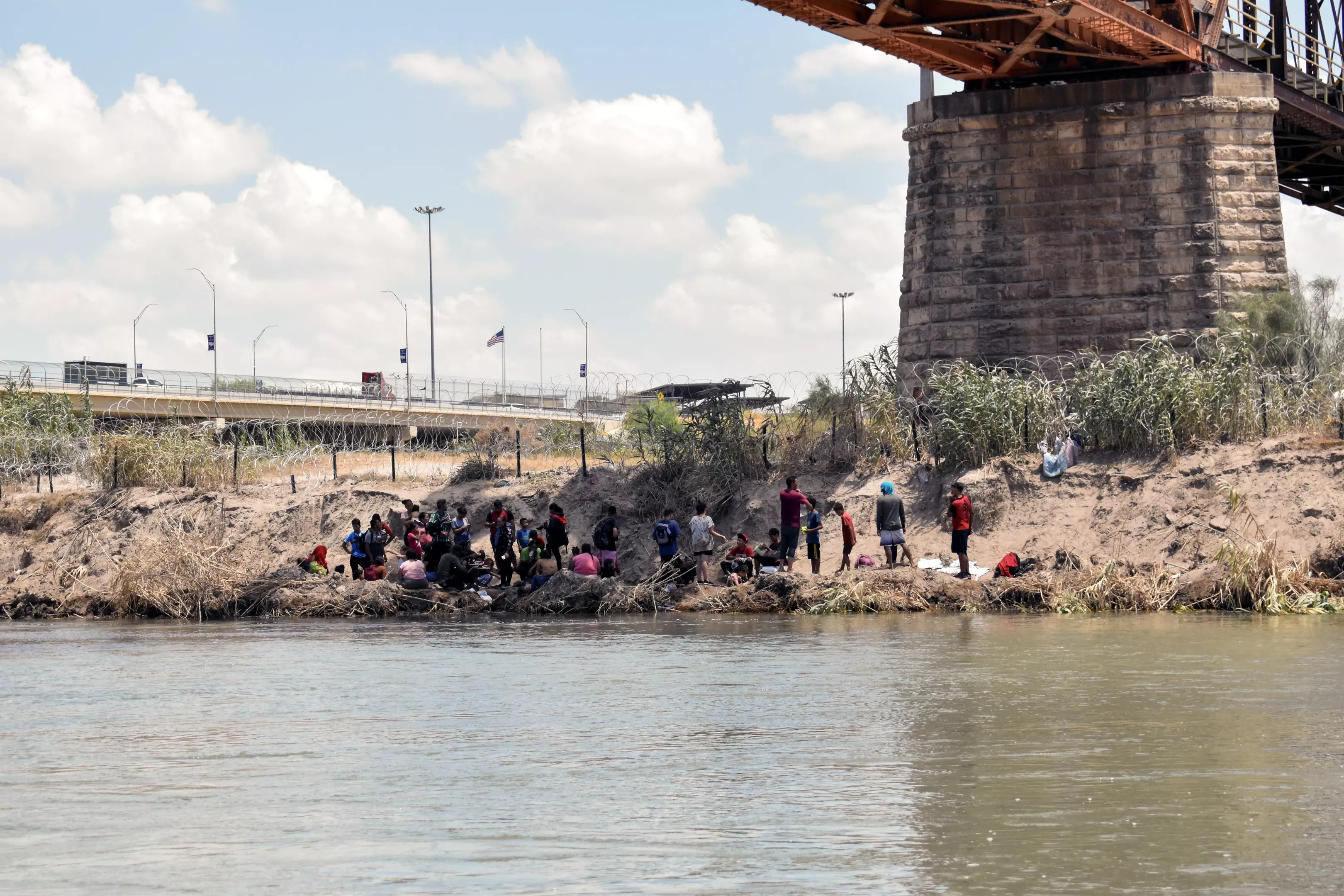
A group of migrants seeks shade under the train bridge. The temperature at the time of this photo was about 109, according to photographer Sara Button.
Sara Button
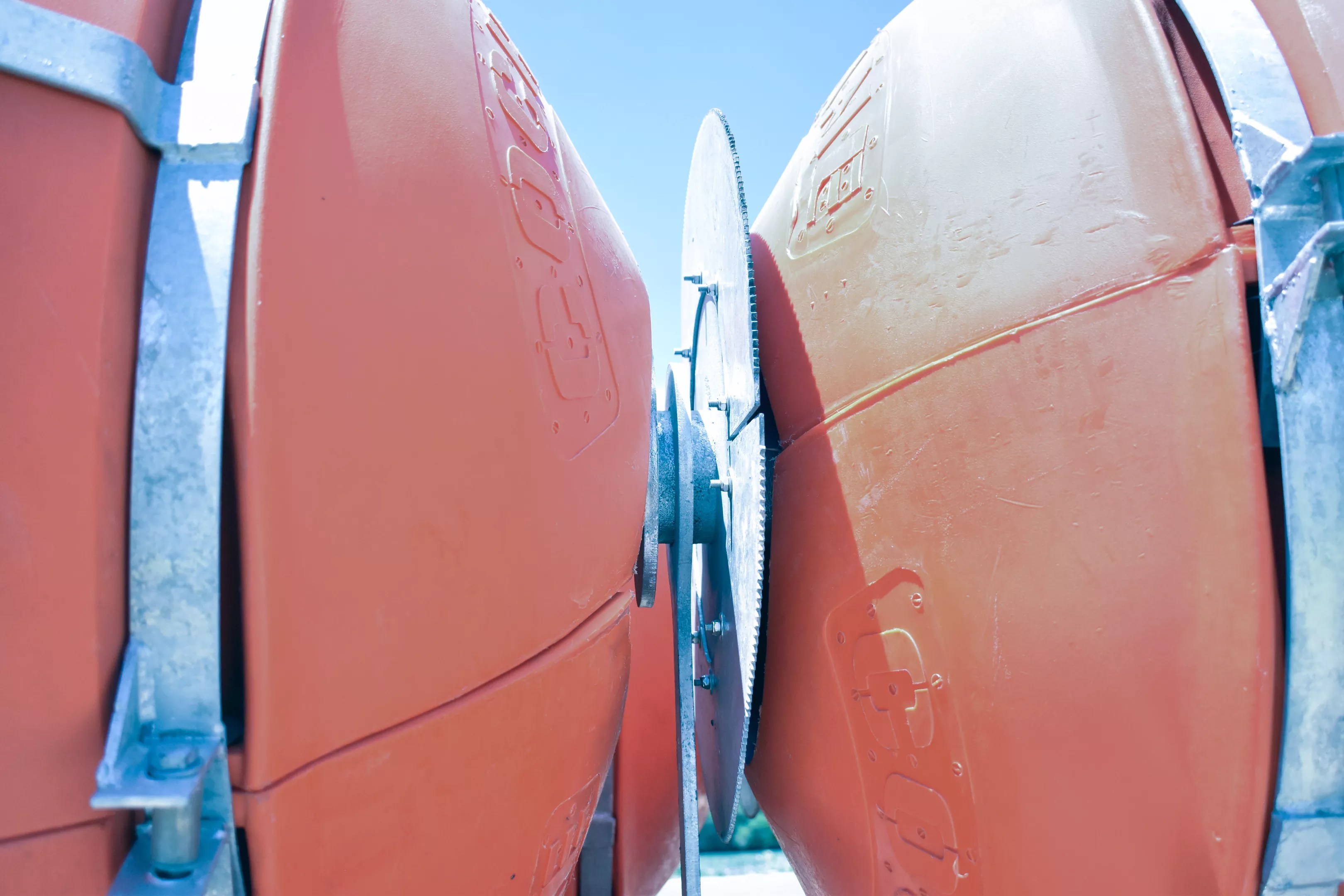
An up-close look at the serrated metal plates between the large orange buoys.
Sara Button

“A Texas State Trooper was walking around close to the Shelby Park boat ramp in Eagle Pass while my friend was talking to other agents about putting a canoe in the Rio Grande. There are shipping containers with concertina wire lining the banks for miles, making it that much more difficult for migrants to safely get to shore.” – Sara Button.
Sara Button
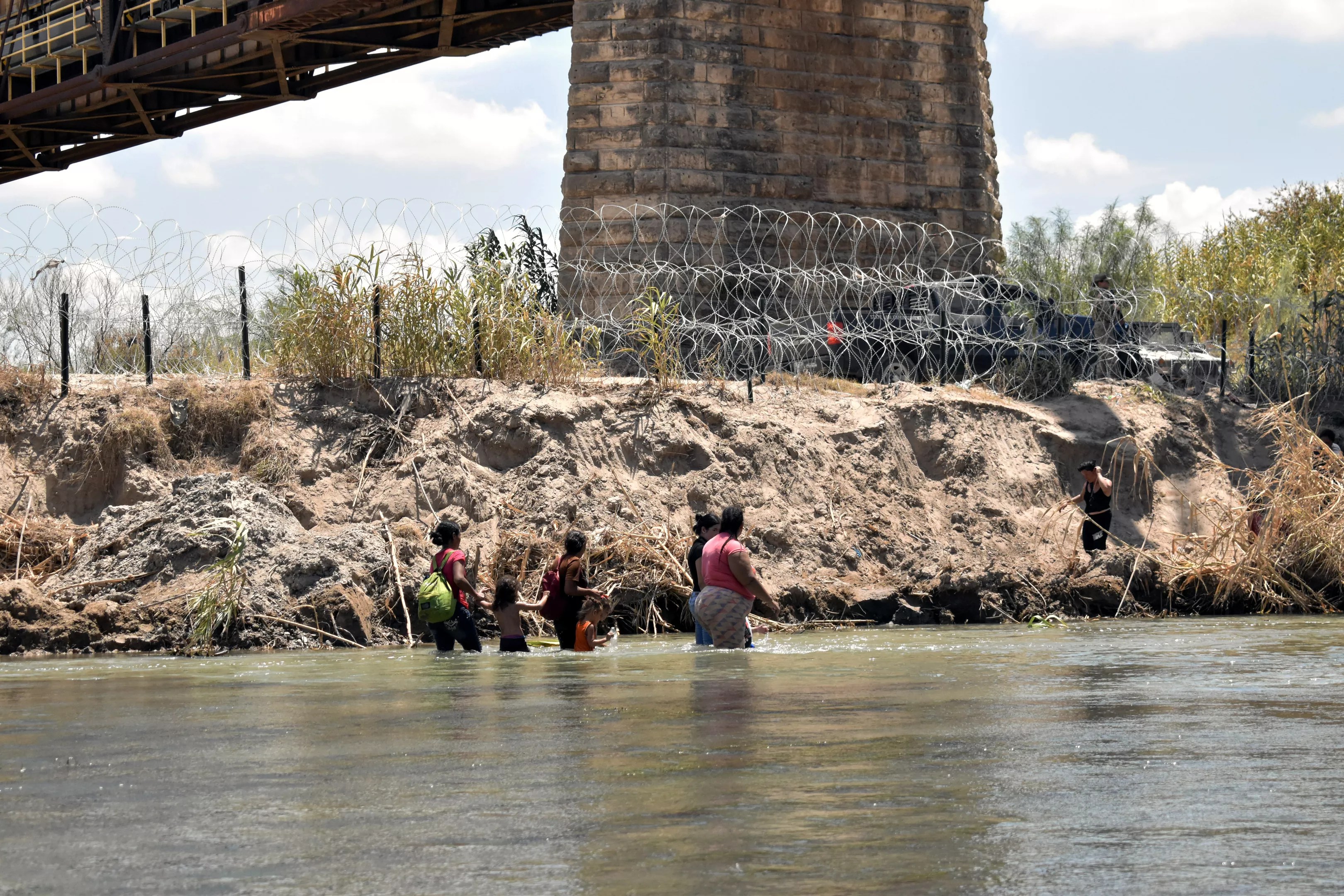
“A group migrants, including two small children, were walking through the Rio Grande to get to the States-side riverbank. I later saw them sitting in the shade under the train bridge with a larger group of migrants.” – Sara Button
Sara Button
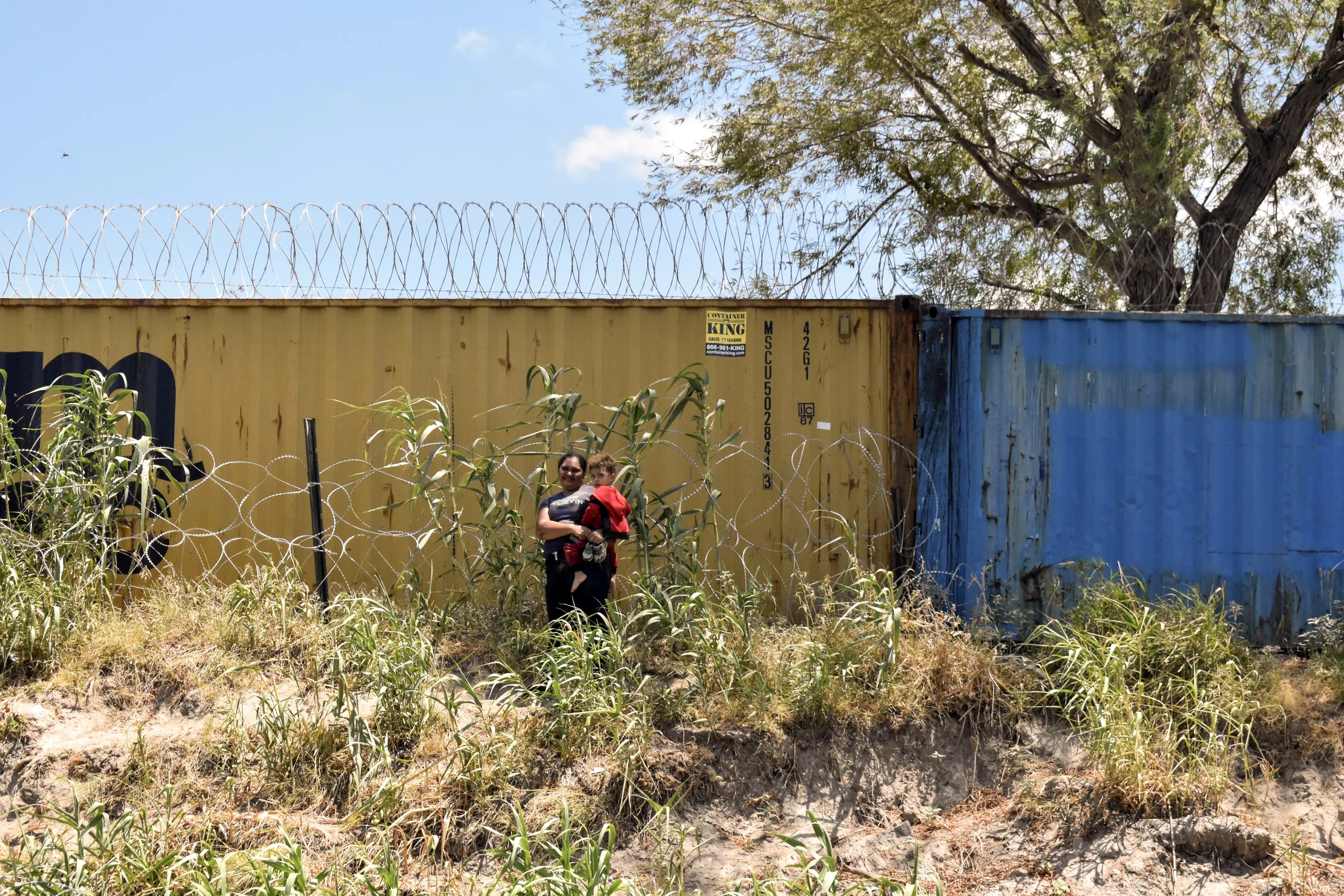
“A woman from Honduras and her child posed for a photo on the States-side banks, next to shipping containers topped with concertina wire. My friend later filled a couple of water bottles for her and a group she was with.” – Sara Button.
Sara Button
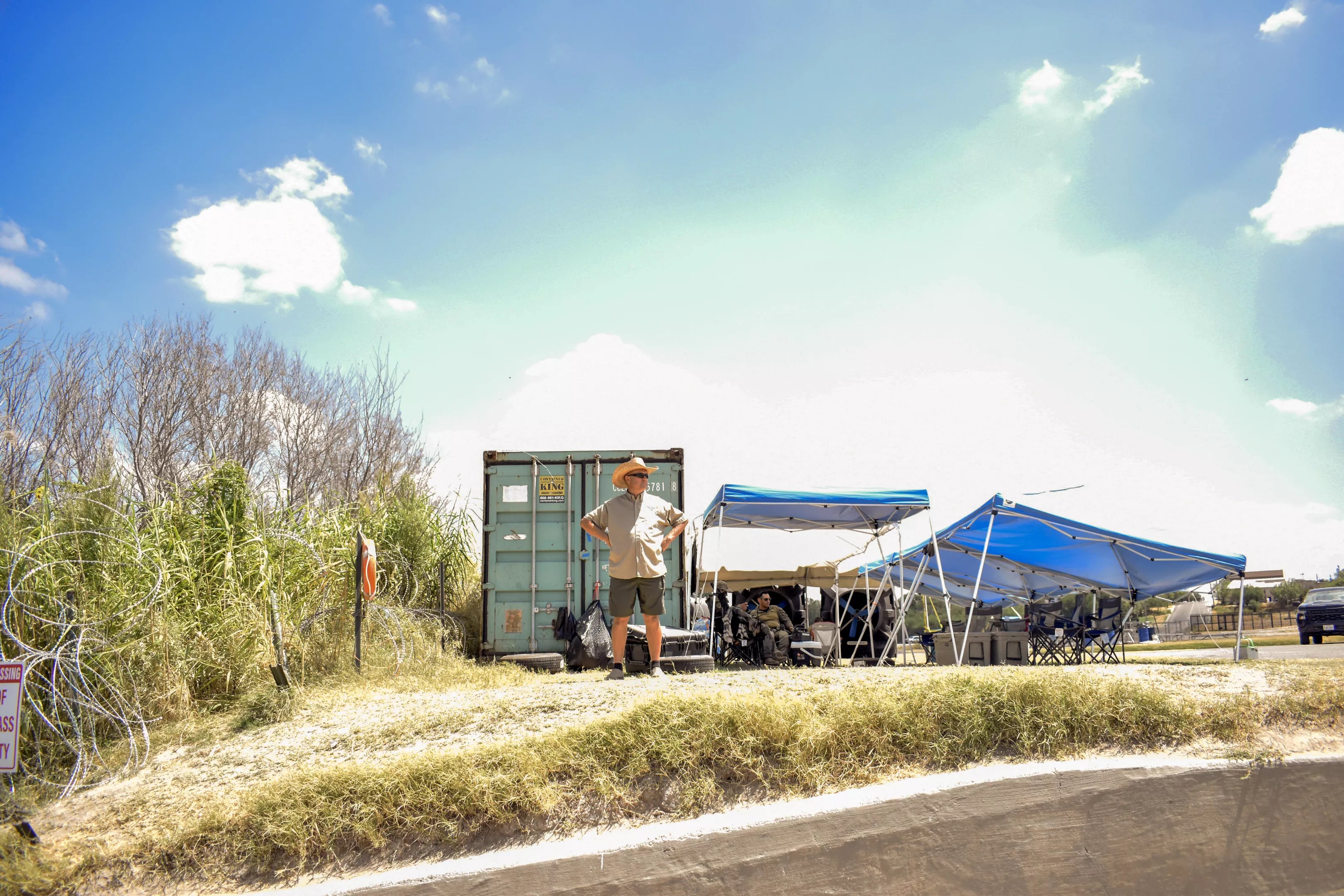
“A Florida Fish and Wildlife Conservation (FWC) mechanic stood guard as my friend and I put a canoe into the Rio Grande. He told us he was Russian and lived in Miami.” – Sara Button
Sara Button
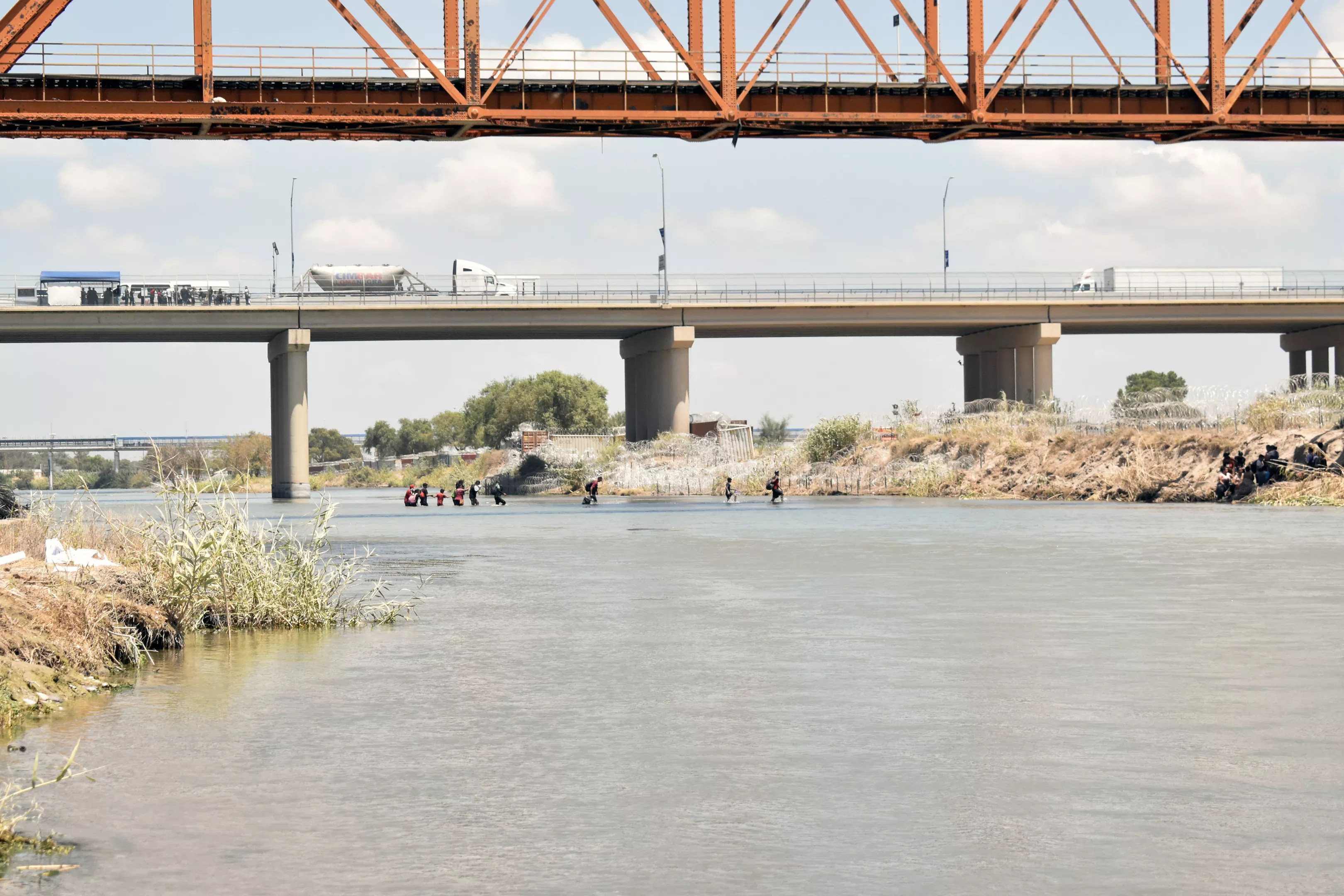
“A group of migrants making their way across the Rio Grande by the intentional bridge in Eagle Pass while another group of likely migrants is being processed through the CBP checkpoint on the bridge above.” – Sara Button
Sara Button